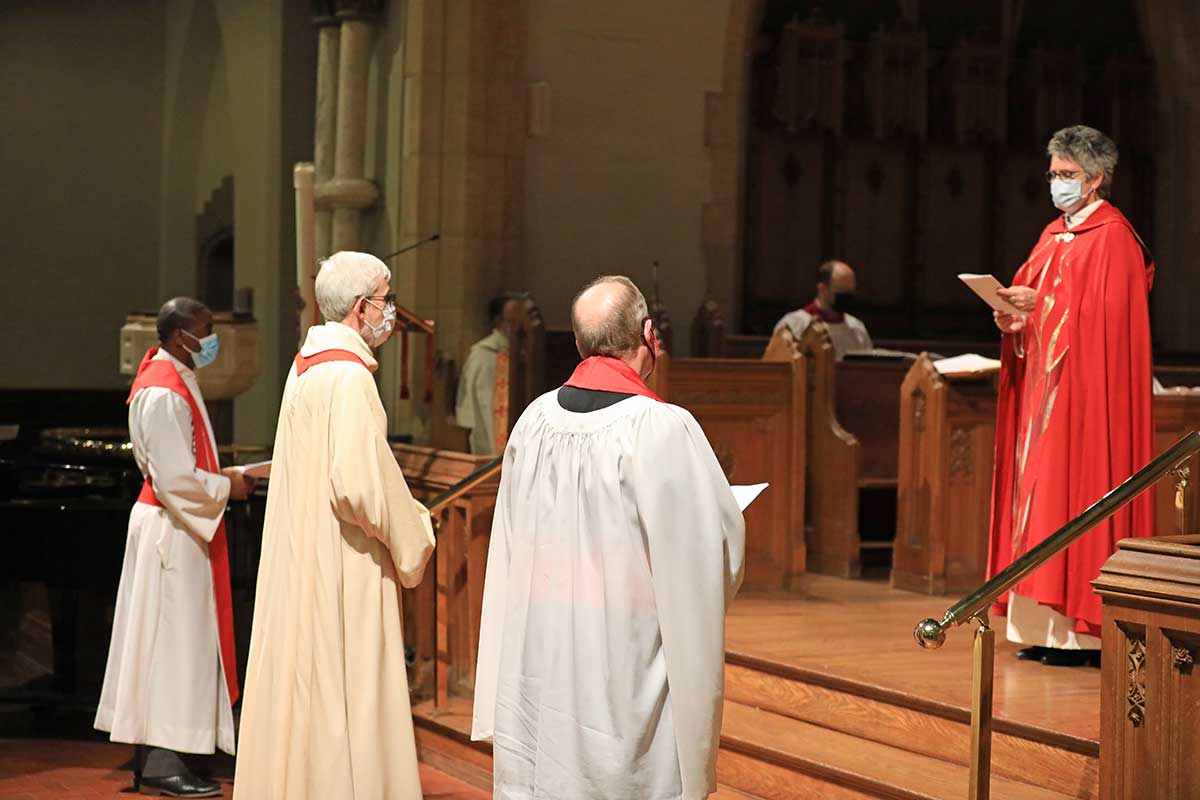The Rev. Dr. Canon John Gibaut, canon theologian for the Diocese of Ottawa, delivered the keynote address at Synod on Oct. 30, reflecting on what it means to be a diocesan church.
Gibaut began by recounting an analogy he used while working at the World Council of Churches when speaking to visiting groups of young people.
“I’d start to talk about mobile phones. Who had an Apple? Who had Android? Which was the best? Which had the coolest apps? And then I would ask why aren’t all of these apps compatible with each other? And the answer of course, is different operating systems,” he said. “I like to think of ecclesiology as the operating system of a church. I expect most of us are more comfortable talking about apps than operating systems. For Christians, most of us are more comfortable talking about apps like prayer, Bible study, mission, justice and peace, worship, but to be functional, churches also need people, like members of diocesan synods, who understand ecclesiastical operating systems because apps do not function without appropriate operating systems.”
He went on to explain that “the diocese is the basic building block of what we understand the church to be and how we relate to one another, as parishes, between dioceses, within an ecclesiastical province, as a national church and indeed the Anglican Communion.”
Gibaut then took his listeners back to the historical origins of the concept of a diocese. “The term diocese doesn’t appear in the church until the 4th century, and the word itself comes from an administrative subdivision of the Roman Empire, but the roots of our diocese are clear in the New Testament, especially in the letters of Paul to various churches. I often think that the introduction to Paul’s letters are kind of a short form for New Testament ecclesiology. Consider these:
• Paul, a servant of Jesus Christ, to all God’s beloved in Rome, who are called to be saints
• Paul, an apostle and all the members of the family of God who are with me, to the churches of Galatia
• These and other churches were rooted and bore costly witness in places—villages, towns, and cities. For ecclesiology, from the very beginning, geography matters.”
Gibaut described how in the church of the first three centuries, a town would have had “one Christian community that would have gathered as a house church led by one bishop, the pastor and shepherd of the whole community….Many of these local churches owned buildings for worship, gathering, and hospitality. Often the bishop and his family lived in such a house. It was typically called in Latin, the domus ecclesiae, the house or the home of the church, and it would have been pretty close in size to any modern Anglican parish, with hundreds, maybe a few thousand people.
“Ecclesiologically, the ancient house church is the direct ancestor of the modern cathedral, which is the bishop’s church but also the diocese’s home church….That means that members of parishes can never be visitors and guests in their cathedral because as members of a diocese, we are members of the one cathedral, which is home to us all. These early house churches were also the direct ancestors of a modern diocese,” he explained.
“When Christianity was decriminalized by the Romans in the 4th Century and whole populations became Christian, the ecclesiastical structures were significantly modified in the new context. Rather than increasing the number of house church communities with their bishops and other ministers, they did something more creative. The numbers of bishops remained pretty constant in cities and towns. What changed was the multiplication of house churches in a town or city, still under one local bishop who is represented in these local communities by a priest delegated to represent the bishop in the celebration of the sacraments, leadership, teaching and preaching. The local church that had spread out in different places was still the one community gathered around a single bishop, now called by a new name, the diocese, the basic expression of local church,” he said.
Returning to the present day, Gibaut referred back to Bishop Parker’s charge to the Synod, comparing the priorities he identified — communications, the shape of parish ministry and their buildings, engagement with the world and life-long learning, Project Anti-racism and affordable housing—to the apps in his opening analogy. “These six priorities, these six projects, these six apps, will be nothing but window dressing without a corresponding operating system—the diocese and a functioning, informed diocesan ecclesiology. No parish could take any of these on alone, but a diocese can.”
Gibaut ended by quoting a part of Bishop Parker’s charge, “as diocesan ecclesiology in a nutshell:
‘Our diocese, not the diocese. We, not they. Every parish is ours. Every community ministry is ours. We are in communion with one another, deeply and inextricably. And it all belongs to God in Christ Jesus.’ ”


St. James, Morrisburg — Stormont Deanery